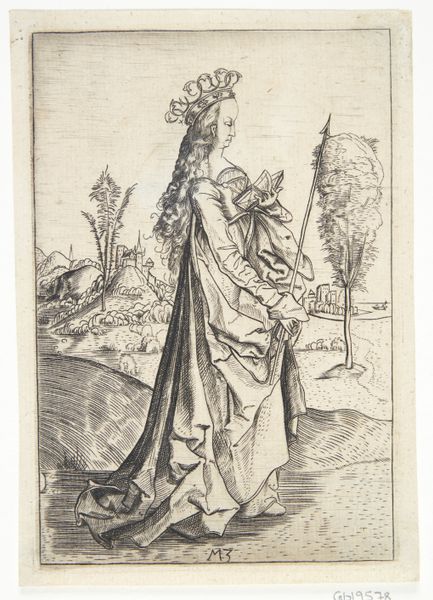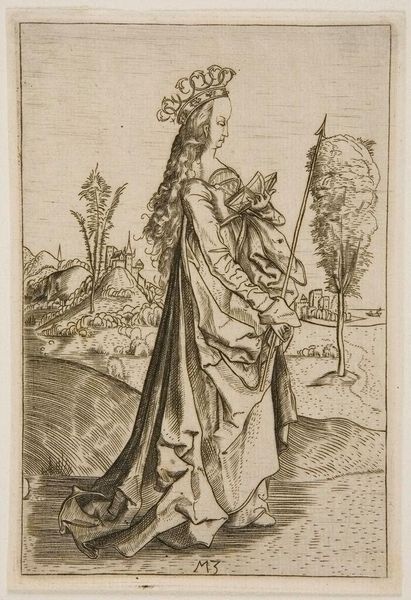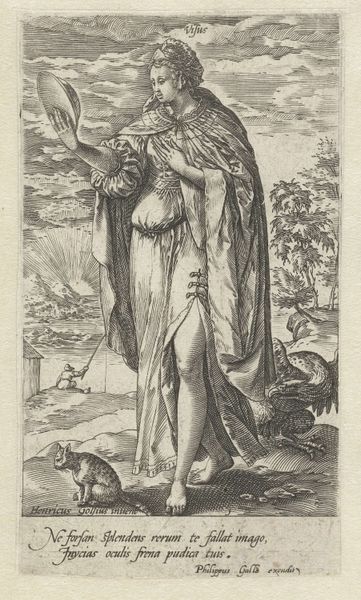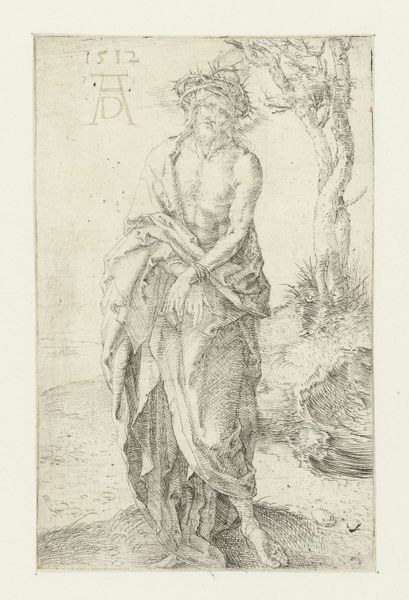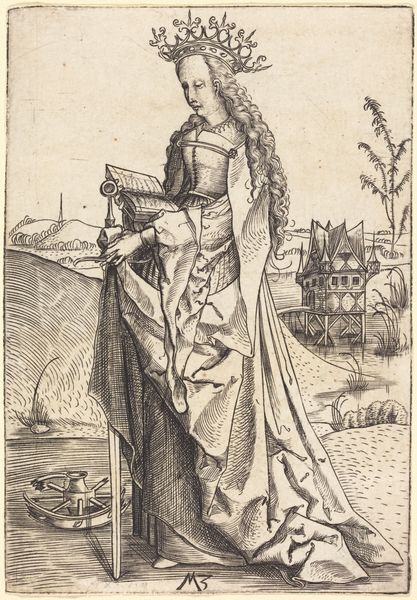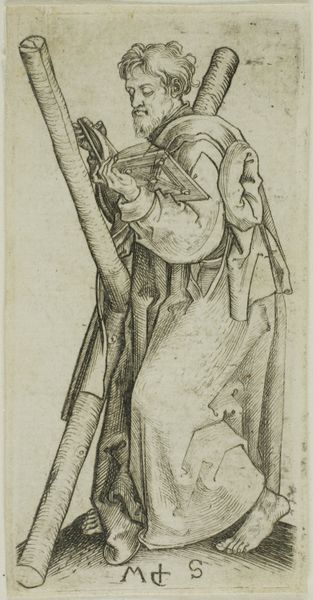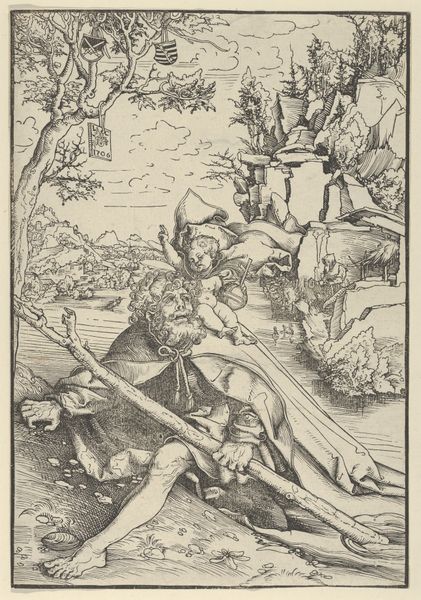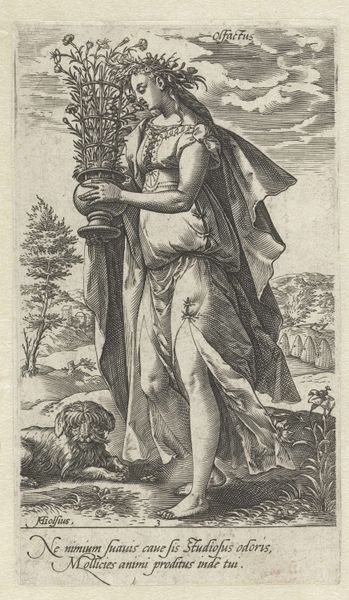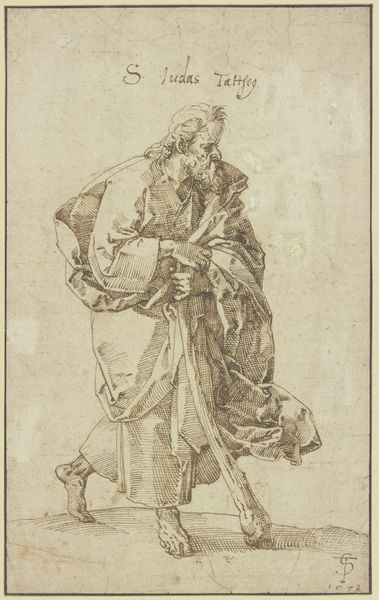
print, engraving
#
portrait
#
medieval
# print
#
figuration
#
line
#
history-painting
#
northern-renaissance
#
engraving
Dimensions: height 129 mm, width 86 mm
Copyright: Rijks Museum: Open Domain
Curator: The engraving before us, "Heilige Ursula," or "Saint Ursula," dates from around 1500 to 1503. Its creator is known only as Monogrammist MZ, a Northern Renaissance artist specializing in detailed prints. Editor: The figure’s solemn expression, combined with the crisp linearity, evokes a restrained yet powerful emotional atmosphere for me. Curator: Absolutely. The historical context here is paramount. Ursula was a popular saint during this period, revered as the leader of 11,000 virgins martyred for their Christian faith. Depictions of Ursula reinforced social expectations around female piety and obedience. Editor: Yes, but isn't there something more subversive happening here? The spear in her hand contrasts sharply with the book in her other hand, disrupting simplistic ideas around what this figure stands for and the traditional expectations for female submission. Her gaze seems contemplative and challenging. The symbols speak to a different reading: strength and leadership. Curator: An interesting counterpoint. Although MZ’s skill in capturing the textures of the fabrics and the landscape is impressive, prints like this would have primarily functioned within a system reinforcing religious and societal norms. Her elaborate attire indicates privilege. The distant landscapes are carefully organized. It is about a specific historical moment, filtered through accepted conventions. Editor: And conventions can be disrupted, subtly or overtly. This engraving might reflect complex intersections of religious piety and female agency in its moment, asking us to re-imagine the story of Ursula beyond simplistic narratives of victimhood. Consider what stories weren't allowed at the time, who were being erased and consider the politics around historical representation. Curator: I think we are in agreement as we see this image speaking to us, prompting a reflection of the intricate and multilayered roles that both history and artistic expression serve in our ever changing world. Editor: And isn't that really what it’s all about? Connecting the past with the ever shifting present, recognizing both then and now as we grapple to imagine better possibilities for the future.
Comments
No comments
Be the first to comment and join the conversation on the ultimate creative platform.
